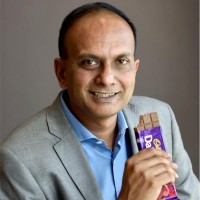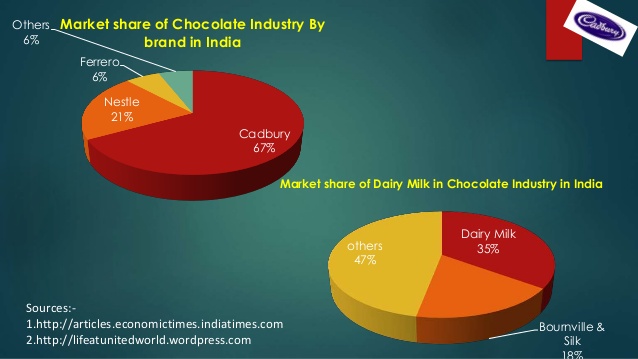The Cadbury, purple wrapper of happiness has witnessed several obstacles, but till now it has managed to maintain a sweet spot in all of our hearts. Be it Diwali, Christmas or Valentine’s Day, Cadbury has been our favourite option since time immemorial. But, this giant snack faced many controversies, leading to its decline in sales, revenue and reputation. But time and again, it has crawled to the top with its effective and efficient business strategies.
Cadbury India, the Indian segment of the British Confectionary Cadbury Schweppes, is dominating the FMCG sector in India since 1948. The company Cadbury is now wholly owned by Mondelez International (originally named Kraft Foods) and is the second-largest brand after Mars. The brand suffered the worm controversy in 2003, due to which its reputation was blurred.
In the same year, in Maharashtra, the product Cadbury Dairy Milk was filled with worms. Many instances of worms in the chocolates surfaced, dragging down the sales. Within 14 days of the controversy, the company initiated PR campaigns; after about three months of the incidents, the brand revamped with the glossy poly pack and the face of Amitabh Bachchan. How did a food product regain the trust of the consumers so fast?
In 2003, following the worm controversy, the Maharashtra Food and Drug Administration seized the stocks of the chocolates manufactured in the Cadbury plant of Pune. Cadbury, in its defence, issued a statement that the worm infestation could not have happened in the plant and that the poor storage facilities of the retailers might be the reason behind it.
But unfortunately, the FDA commissioner did not buy the logic of Cadbury, he said: “It was presumed that worms got into it at the storage level, but then what about the packing – packaging was not proper or airtight, either way, it’s a manufacturing defect with unhygienic conditions or improper packaging.” The worm controversy happened during the festive occasion of Diwali. The sales decline by 30% and the consumers were reluctant to purchase the worm-infested chocolates. In the history of Cadbury, the advertisements of the brand went off the air for more than a month.
In 2004, Cadbury invested $150 million on imported machines and equipment and embellished the pack of the product. The metallic glossy poly pack was 10-15% expensive, but Cadbury did not hike the price of the products. According to the managing director of Cadbury India, Mr Bharat Puri, “While we’re talking about a few bars of the 30 million we sell every month – we believe that to be a responsible company, consumers need to have complete faith in products. So even if it calls for substantial investment and change, one must not let the consumers’ confidence erode.” By June 2004, Cadbury could revive its past glory, Big B was seen promoting and advertising the product, and the consumers were happy engaging in their chocolate cravings.

Things were going smooth, but the problem occurred again in the decade, which witnessed internet explosion, digitization and most importantly demonetization of 2016. The sale of Cadbury was again hit, but did it pull itself up once more? Let us look into it.
In February 2017, Cadbury India reported its worst performance in all most a decade. The revenue of Cadbury India which was Rs 6,562.7 crores in 2015 reduced to Rs 5,698.7 crores in 2016, while the profit margin dropped by a whopping rate of 60%. Demonetization of 2016 was the immediate cause for the declining sales, as cash was a constraint for the anxious and agitated consumers across the country. The 25% decline in revenue can be owed to the sudden decision of demonetization taken by the Modi Government. Deepak Iyer became the new MD of Mandelez India and helped the brand to dominate the market again.
New executives and senior experienced officials were hired, in departments like Sales, Finance, and Human Resources etc. Deepak Iyer’s first step to the turnaround was to make sure that the product is available in all the corners of the country, both the rural, urban and semi-urban sectors, the malls, hypermarkets, Kirana stores etc.
As per Iyer’s remark of 2018 given to Business Today, “Eighteen months ago, we used to service 20,000 villages directly; today, we service approximately 50,000 villages directly. We have invested in about 300,000 visi coolers to chill our products,” The company has launched several new products to attract successfully the attention of the chocolate lovers, like Cadbury Silk Bubbly, Silk Oreo, Silk Caramello, Golden Oreo, and also several other variants like Cadbury Fuse, Bournvita Biscuits, Lickables etc.
Since Iyer’s arrival in the company, the growth has been substantial, and even now its position is numero uno. As per Iyer, “Ninety days after I joined, we had demonetisation. Despite the dip in consumption, we launched Silk Oreo in December 2016, which was the second month of demonetization. Three months after that, we followed it up with Cadbury Dairy Milk Lickables. There will always be ups and downs. The biggest thing we are proud of is that we looked at it optimistically.”
Cadbury applies Category model, which refers to using global synergies for domains like Procurement and Innovation. Cadbury 5 Star, Silk Oreo and Lickables were first launched India, and then in other parts of the globe like China, Vietnam, South Africa, Latin America etc. Though Cadbury has faced criticism hinting that the products are all same, just chocolates, the brand is successfully ruling over the Indian market.

From the sweet and sour journey of the Cadbury, there are some valuable lessons to learn.
- Innovation is essential for business growth: Cadbury Heart was launched during Valentine’s Day, keeping in mind the demands of the millennial. The heart-shaped chocolate placed in the middle is visually appealing and also delicious. Foreign brands have entered the Indian market like Hershey’s, Snickers, Ferrero Rocher. But the consumers are inclined towards this iconic purple brand.
- Good leadership aids in business expansion: Deepak Iyer became MD at a very crucial juncture. The experienced veteran managed to implement the strategies required for the increase in sales. The new executives, top officials worked unanimously for the same goal and the success followed. Unity and team effort are essential; its absence can be detrimental, as you can see the case of Kodak or Onida or Foodpanda.
- In-depth market research is foremost: Without market research and understanding the changing market dynamics, no company can succeed. The company was well aware of the demand of the consumers. The celebrity appearances and glossy packaging gained the trust of the people in 2003. The company managed to keep the price unchanged, and it needed a lot of efforts. The company knew the demands of the price-sensitive Indian consumers.
Not all can pull themselves up, like Cadbury, say for example Indiaplaza. The founders of Cadbury are benevolent and transparent enough to share their journey with us all. Mistakes and failures are great teachers, but wouldn’t be great if you can avoid them on time?
Google will give you hundreds of websites, but an expert will guide you thoroughly in your journey. Do you want to talk to experts in detail? Talk to our niche skilled experts now to know the diverse competitive market in greater detail! We at Vedak have an exclusive pool of experienced industry professionals and veterans who have in-depth knowledge about the business nitty-gritty. Contact us to know more.

